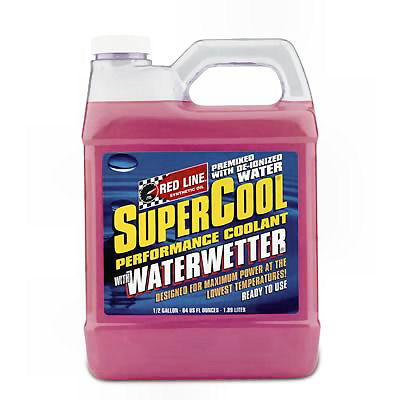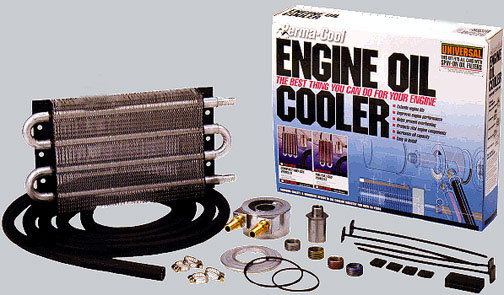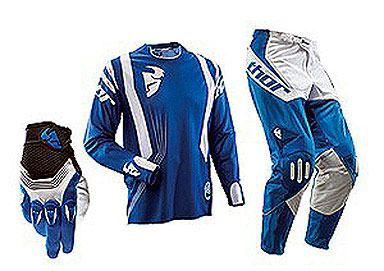Keeping Cool Tips to Beat the Summer Heat
Avoiding A Man or Machine Meltdown
by Jason Giacchino
When we think of summer, we typically think of heat. And while such thoughts can certainly be comforting after a long cold winter, the reality is that too much of the stuff can be dangerous to both man and machine.
Believe it or not, the human body and the engine powering your ATV aren’t all that different from one another: Both require a fuel source, a conversion of latent energy into kinetic energy, require oxygen for this process and depend on a cooling system to keep from melting down.
In the case of your ATV, engine overheating can be far more destructive than the usual steam-show and loss of power experienced, namely in the fact that engine materials are designed to operate within certain temperature tolerances. Surpass these and the very properties of metal can warp, bow, expand, and make contact with each other.
The good news is that both man and machine are designed with the capacity to make use of additional cooling methods should Mother Nature really turn on the heat.
KEEPING YOUR ATV COOL
Know Your Temp
Odds are your car has a gauge that let’s you know the operating temperature of your engine (and a light/alarm system to notify you if you surpass normal operating parameters). Your ATV likely does not. Not to worry; if you fear you will be riding in abnormally toasty conditions or are just the curious type, companies like RaceTemp offer simple stick-on thermometers that keep you in the know as far as your engine’s operating temp is concerned.
Top Her Off
Can you guess the number one cause of engine meltdown in liquid cooled engines? If you said operation with insufficient coolant in the radiator, you’d be right. Just because your machine is equipped with liquid cooling, never assume you can become a desert explorer. The simplest, most effective method to protecting against an engine melt down is to check your fluid level and make certain you are mixing your coolant to the manufacturer’s recommendations.

Bonus Fact: Did you know that nothing absorbs/carries heat better than plain old water? But the trouble with water is that it freezes easily and boils over quickly? Engine coolant is a combination of chemicals that lowers water’s freezing point and raises its boiling point. Additionally it’s always wise, if forced to mix your coolant with water, to use distilled water as opposed to tap, on account of the fact that tap water is often loaded with minerals that gather in the small orifices of the cooling system, plugging up critical flow.
Air-Cooled Idling
Many ATVs come equipped with air-cooled engines, which basically rely upon fins on the cylinder to channel airflow across the engine’s surface, dissipating heat in the process. Since moving air is a critical component of the system (they lack thermostats) long periods idling in intense heat can be detrimental. Remember that if you have an air-cooled design, shut down when you plan to stop for anything over a minute or two in particularly hot conditions.
Extra Help
While water-cooling and air-cooling represent the two extremes of the spectrum, there is actually a measure between the two known as oil cooling. This works very similar to a standard water-cooled radiator design except it lacks fluid for the specific purpose of carrying off engine heat. Rather the engine’s oil itself is carried away from the block, across a radiator for cooling then back into the engine.
Many models (both air and liquid cooled) come equipped with oil cooling for additional protection against heat. The good news is that if yours does not, aftermarket oil cooling kits are available for most ATVs, are affordable, easy to install, and provide a noticeable difference in temperature immediately.

Also many ATV models come equipped with thermostatically controlled fans. Since an ATV’s radiator depends upon the flow of air to dissipate heat collected by the coolant, a fan assists a machine that has been left idling by providing that moving air to a motionless vehicle.
Aftermarket fans can be purchased if your water-cooled engine is not factory equipped.

KEEPING YOU COOL
The good news about keeping the machine that is your body cool is that regardless of how long you’ve been an ATV enthusiast, you’ve already got a lifetime’s worth of experience in the subject.
The first thing to remember is that our bodies are actually liquid cooled. Rather than antifreeze, we produce a coolant called sweat, which draws heat from our body then relies upon moving air to dissipate it (through evaporation).
Just like making sure your radiator is full, keeping your body’s stores of fluid up is every bit as crucial. It’s key to begin hydrating long before you are actually in the saddle- we’ve all heard the old expression “by the time you’re thirsty, it’s already too late”.
Consume water the night before, right up to, and if possible, during your hot ride. The daily-recommended dose of the stuff is between 6 to 8 eight-ounce glasses. 96% of us aren’t getting enough.
Sugary drinks and caffeinated beverages (energy drinks usually contain both) are typically frowned upon. While they do provide the body with needed fluid, they are also a diuretic, which means they make you urinate more frequently. Outputting more than you are taking in can be more harmful than starting off with too little.
Sports drinks are overkill for many but studies suggest that high intensity activity for longer than an hour, can make a sports drink a wise choice, because they contain carbohydrates that can prevent blood sugar from dipping. They also help replace helpful electrolytes.
Extra Air
Much in the logic behind putting fins on the cylinder of an air-cooled engine, wearing clothing designed to channel air across more of your skin’s surface is always an effective means of keeping your body temp down. Most manufacturers offer vented variations of their popular off-road gear, with vents strategically placed in the areas where we sweat most.
Some companies even offer vented versions of their boots. Remember to check your helmet to see if it is equipped with closable vents. In the summer months, you’ll want these open to flow maximum air.

That’s a Wrap
Many companies produce water activated body cooling neck wraps that can be worn underneath your jersey to lower core body temperatures. Basic models use gelatinous compounds to store the cold of refrigeration, others require water be added to an internal bladder and the latest designs coming out actually require neither, instead working off a chemical reaction to produce cooling effect.
However the means, a wrap can be an effective means at cooling blood as it passes by, for it to then be pumped throughout the body.

Getting Misty
We close out the category by including an item that seems a bit pricey and frivolous, until you try it. Misters are pumps that run off of a 5-gallon bucket of water (and the cigarette lighter of your truck, or power outlet on your ATV/ UTV) that turns water into cooling mist. It works best in conjunction with an enclosed area (such as under an awning or canopy). Deluxe models, which can cost upward of 0, often include their own dedicated rechargeable battery. These things are invaluable when the ATV riding experience includes long days in the race pits under the sun or on camping trips in the muggy weather.

